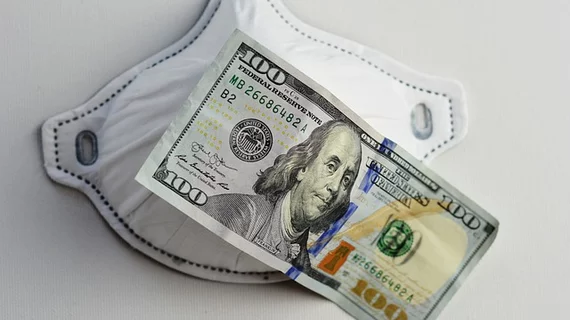Nearly 70% of radiology practices have applied for financial relief during the pandemic
At the height of the pandemic, nearly all radiology providers saw their imaging volumes fall off a cliff, taking revenue along for the ride. And a new survey further illuminates the suffering, revealing that about 70% of respondents were forced to apply for financial relief.
The American College of Radiology and Radiology Business Management Association queried more than 200 U.S. practices for their findings, published Tuesday in JACR.
Of the locations that sought out loans or stimulus funds, more than 90% of imaging centers, hospital-based programs, breast centers and mixed practices were driven to apply for two or more programs.
Going forward, Ajay Malhotra, MD, with Yale School of Medicine’s radiology department, and colleagues aren’t sure that will be enough.
“The Coronavirus Aid, Relief, and Economic Security (CARES) Act and the Paycheck Protection Program and Health Care Enhancement Act together provide $175 billion in emergency funding for hospitals and other healthcare organizations,” the authors wrote. “However, it remains uncertain whether this level of funding would be adequate or additional congressional action may be necessary to stabilize health care markets.”
To reach their conclusions, the ACR and RBMA sent a 48-question survey to its members, asking about patient demographics, volumes, financials, personnel and staff adjustments, and recovery outlook. The email was delivered in May, but covered figures during April. In total, 228 responses were included, most were hospital-based (80) followed by mixed practices (64), imaging centers (26), other (3) and one breast center.
The researchers also found:
- Nearly all practices reported glaring declines in imaging volumes during April, ranging from 56.4% to 63.7%. Outpatient exams were most affected, while emergency department settings experienced a nearly 40% drop during the first wave of hospitalizations.
- Approximately 15% of radiologists tested positive for COVID-19. But more than half (52.3%) said their access to personal protective equipment became an issue or was “inadequate.” On the flip side, 35.3% said they had an “adequate” supply.
- Most claimed to have existing remote reading or teleradiology capabilities already in place, with 22.3% implementing such technologies in response to the pandemic.
- A good chunk of rad practices believe volumes will recover and expect a near-term surge as elective imaging resumes.
Malhotra and colleagues said they plan to conduct a follow-up survey to gain more insight into these issues, but they warned the near-term future remains unclear as the virus continues to spread.
The survey shows “the dramatic impact of the COVID-19 pandemic on radiology practices and the response measures taken during the crisis,” the authors added. “These survey results will hopefully help the radiology leadership gauge the initial impact and make appropriate changes in response to the pandemic.”
Read the entire pre-proof study in the Journal of the American College of Radiology here.

